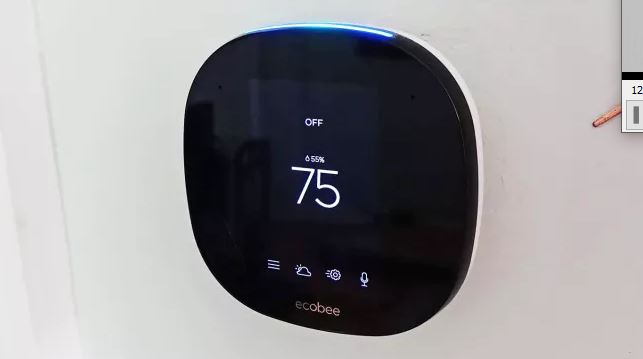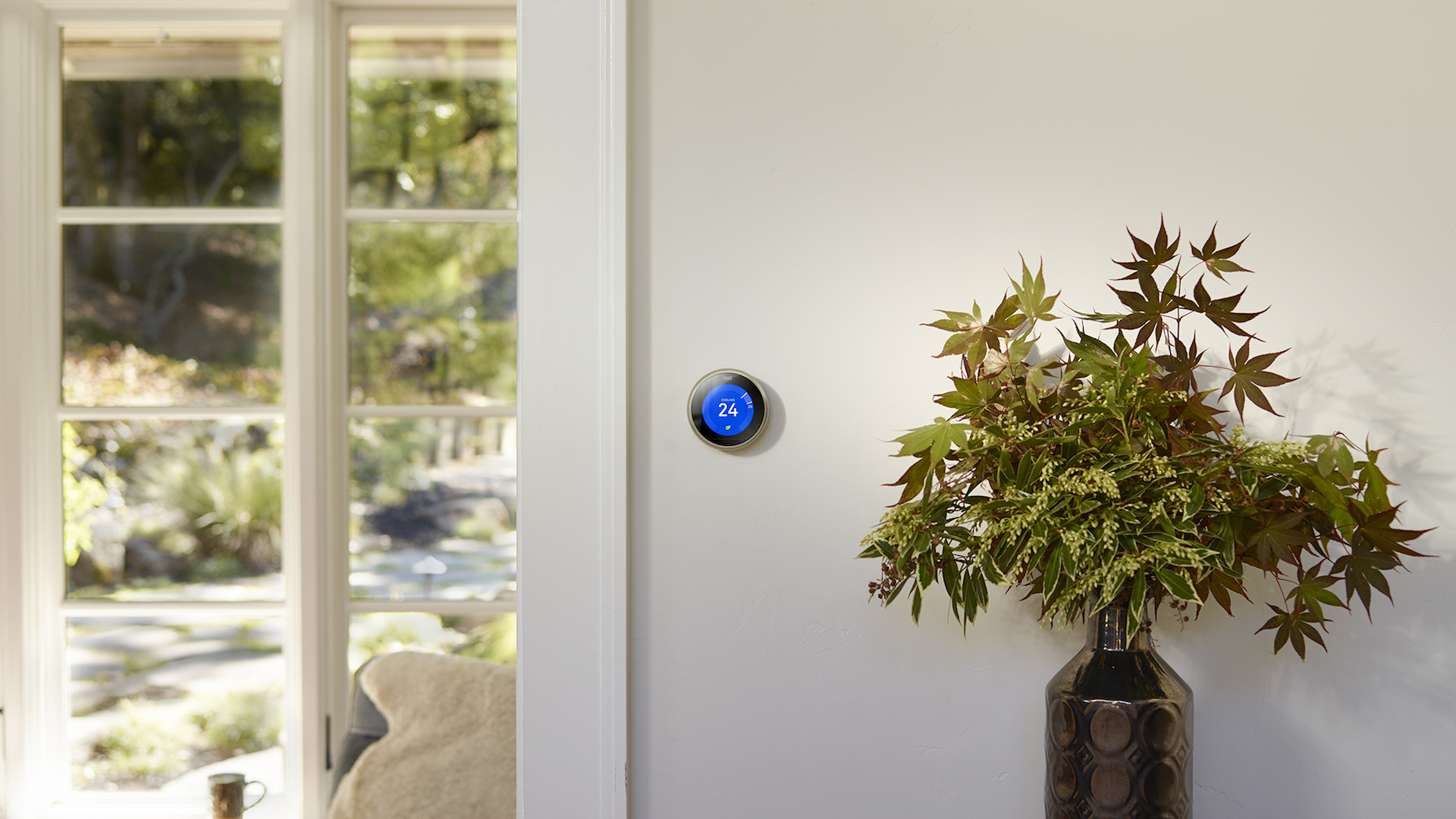The best smart thermostats ensure you can control the heating and cooling of your home from your smartphone, putting an end to wasting energy (and money) heating or cooling an empty house because you’re going to be late home. So, it’s hardly surprising a quarter of Americans have a smart thermostat installed in their property, according to research by comparison site ValuePeguin. Ecobee and Nest are two of the biggest names dominating the smart thermostat market right now, and if you’re considering kitting your home out with internet-connected heating and cooling, it makes sense to opt for one of these brands. However, it can be hard to decide which is best suited to you - not only do the thermostats look different, some of the features they offer differ too. It really depends on the type of smart temperature control you want in your home - do you need simplicity or are you looking at a system that doubles as a smart alarm, as to which one of these smart thermostats you choose. Both Ecobee and Nest offer a number of different smart thermostats, so there’s sure to be a model to suit the heating and cooling systems in your home. Ecobee currently has two models in its range; the entry-level ecobee3 lite and the more premium SmartThermostat with voice control. Both allow you to control your heating and air conditioning from your smartphone, learn your routines and adjust your schedule accordingly, and even pause the heating or cooling if an open window is detected. However, the top-of-the-range Smart Thermostat comes with Alexa built-in, and features a speaker so you can listen to Spotify playlists from the device. It also comes with a SmartSenor that can be placed in another room and control the temperature based on whether it detects motion in that room. Nest’s high-end offering, the Nest Learning Thermostat (third generation), can learn your routines and how quickly or slowly your home heats up and cools down, and adjust itself accordingly, so it’s at the temperature you want when you want it. There’s also the more affordable and more simplistic Nest Thermostat, which isn’t self-learning and lacks some of the stylish design touches found on the Nest Learning Thermostat, such as the metal dual that lets you adjust the temperature. That said, at almost half the price, these are compromises that those on a budget will welcome. The Nest Thermostat also replaces the Nest Thermostat E, which was launched in 2017, and has since been discontinued in the US, but is still available in the UK. So just how much will you have to spend if you want to automate the temperature in your home? At first glance, it might look like both ecobee and Nest have thermostats at very similar price points. The ecobee SmartThermostat with voice control is priced at $249 (around £180 / AU$340), while Ecobbee’s most affordable option; the ecobee3 Lite will set you back $169 (around £125 / AU$230). All three units are unavailable in the UK and Australia at the time of writing. The Nest Nest Learning Thermostat (third generation) will set you back $249 / £219 (around AU$340), while the Nest Thermostat is priced at $129 (around £95 / AU$175) and if you require a Nest trim kit (a plate designed to cover any imperfections on the wall from removing your old thermostat) that costs an additional $15 (around £10 / AU$20). Neither thermostat is available in Australia, and as we’ve already mentioned while the Nest Learning Thermostat is available in the UK, the Nest Thermostat E is the only affordable option in the UK right now, and is priced at £199 (around $275). Technically means that if you’re looking for the most budget option, the Nest Thermostat is a great way to go. A closer look, however, reveals ecobee’s smart thermostats come with more advanced features and capabilities than their Nest counterparts, making them better value - more about that below. When it comes to what you can do with these smart heating and cooling systems, both ecobee and Nest are evenly matched when it comes to the most basic functions. No matter whether you opt for an entry-level device or the high-end models; you can control the temperature from your smartphone both when you’re at home and away from the property, or from the device itself. You’ll find temperature and humidity sensors in all of the thermostats, and support for multiple zone setups, smart home integration, and an ‘away from home’ function that allows them to power themselves down when no one is home. However, Ecobee thermostats offer that little bit extra. For example; the Ecobee3 Lite boasts occupancy detection, and a ‘Follow Me’ feature that adjusts the temperature according to the rooms currently being used. It also has a handy eco+ feature, which not only adjusts heating and cooling based on current humidity and cost of electricity, but also comes with a scheduling assistant that compares your real-world routine with your thermostat schedule and makes appropriate recommendations. There’s also the AC Overcool to Dehumidify feature that utilizes your AC to lower the indoor humidity and the pause feature that turns it off when a window or door is left open for 5 minutes. It’s the same case with their high-end counterparts. Both the Nest Learning Thermostat and the ecobee SmartThermostat with Voice Control have all the same benefits as the entry-level devices, they build on this with the ability to learn and adapt to your routines and temperature preferences, help you save energy, and deliver energy reports so you can keep an eye on your energy consumption. But, again, it’s the ecobee option that wins there in terms of features. It not only comes with the SmartSensor included in the box, but also boasts nifty additions like access to Spotify, Bluetooth streaming, hands-free calling, and intercom for announcements. Both the ecobee SmartThermostat with voice control and the ecobee3 Lite can be used with ecobee’s Haven subscription service that lets you monitor your home from anywhere, automatically arms and disarms your home while sending you important alerts and notifications. It’s priced at $5 (around £4/AU$7) per month, you do not need the subscription to take advantage of the smart thermostat functionality. It’s also worth noting that ecobee claims to deliver up to 26% in annual savings on heating and cooling costs with its thermostats. Meanwhile, Nest only promises up to 12% on heating bills and 15% on cooling bills in savings, although this will depend on how you currently use your HVAC system - whether it's already scheduled or is just used as and when you need it. Both ecobee and Nest have apps that allow remote access and control of their thermostats. You can control the two Nest smart thermostats using the Google Home app, which is available for both iOS and Android. Bear in mind that you have to set up the Nest Learning Thermostat in the Nest app first, then migrate your Nest account to a Google account before you can control it using the Home app. The Google Home app will let you do things like set target temperature, change presets and mode, set your schedules, and view your energy history from anywhere. Ecobee, on the other hand, has the ecobee app, which is also available for both iOS and Android. This app gives you full control of your ecobee smart thermostat (and the rest of your ecobee home devices) wherever you are. Much like on the thermostat’s display, this app has a temperature slider, mode menu, Vacation mode tag, and a button for toggling on/off, among a few other things. It’ll let you do everything from setting schedules and current temperatures to setting restrictions. Although Nest is now owned by Google, its smart home devices work with other smart home frameworks besides Google Assistant. The Nest Thermostat and Nest Learning Thermostat work with Alexa and Samsung SmartThings, which means they’re compatible with the best smart speakers for voice control. Currently, they do not have Apple HomeKit support, but that is soon to change. Ecobee’s smart thermostats work with Alexa, Google Assistant, Samsung SmartThings, and Apple HomeKit. Its SmartThermostat with Voice Control also comes with Alexa built-in, allowing you to make hands-free calls, make intercom-style announcements, and play music and podcasts directly from the thermostat, much like you would on the Amazon Echo. You might think that ecobee’s smart thermostats are the clear winner in the ecobee vs Nest battle. After all, they do come with more features and functionalities that make it easier for you to not only keep your home or office environment as comfortable for you as possible at all times but also save on energy and your electric bills. In that way, they are also a better value for your money. However, there are several reasons to go for a Nest smart thermostat as well. If you’re already deeply invested in the Google Home and Google Assistant setup, for example, getting a Nest smart home device makes more sense. That’s beyond the fact that you’ll find Nest’s offerings will blend with your home’s interior design with ease, thanks to their different color options and smaller size (not to mention, the Nest Thermostat’s fancy mirror display). Whether it’s having ecobee’s plethora of features at your disposal or getting Nest’s minimalist approach that’s more important to you, at least you have everything you need above to make an informed decision. What is a smart thermostat? How do you use it? Do I need a subscription?Range

Price
Features

App
Smart home integration
Verdict
FAQ
A smart thermostat is something akin to what you’d expect a thermostat in a futuristic sci-fi movie would be like. It regulates the temperature in a specific space – whether that means your entire home or office, or a particular room – while allowing you easier and more convenient control via your smartphone or your go-to smart assistant. Many smart thermostats also learn from your routines and adjust accordingly.
You use it just like you would a traditional thermostat, setting your desired temperature, mode and/or time. However, it comes with more modern features like smart home integration for voice control and a smartphone app so you can control it via your phone. Some thermostats come with motion sensors, which allows them to detect if anyone is home, while others offer room-by-room temperature control.
Although some manufacturers do offer home monitoring subscriptions, you do not require one to utilize a smart thermostat to its full potential. ecobee, for example, has Haven, which sets you back $5 monthly. However, it’s really mostly for sending advanced notifications.
source https://www.techradar.com/news/ecobee-vs-nest-which-smart-thermostat-is-right-for-your-home/
Rule #21 of the internet: Original content is original only for a few seconds before getting old.


